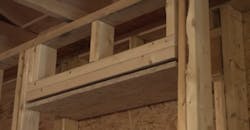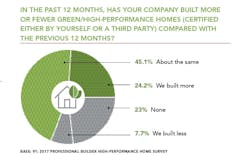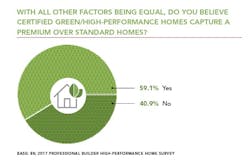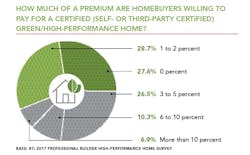Exclusive Research: High-Performance Home Challenges
Elaborating on the difficulty of marketing sustainable houses to prospects, one Colorado custom home builder writes: "Once I was a super-strong advocate for green. Now I focus on what the buyers want, which is to come to a reasonable level of energy-saving components.
A common response in Professional Builder’s High-Performance Home survey was that consumers aren’t willing to pay extra for energy-efficient, eco-friendly features: “Too much bad marketing out there,” wrote a California production home builder. “When you really do step up and build an efficient, certified home, you’re compared to your competition who [are] marketing ‘green high performance,’ which turns out to be nothing more than minimum code requirements that everyone already does. Unless you have a savvy buyer that really understands the specifications and the impact of your specification/inspection choices, we’re forced to give that value away at no cost.”
Of course there are builders and architects that differentiate themselves by going as extremely green as Net Zero energy–ready houses for an audience seeking a reduced carbon footprint and willing to embrace higher up-front costs for lower utility bills later on. Proponents, rebutting the contention that buyers don’t ask for green, argue that buyers don’t ask for many finish upgrades either, but builders sell those.
Yet finding those willing buyers is tough. “The consumer either is educated in environmental concerns or not,” a Missouri custom home builder wrote. “The educated understand the price difference for systems. The uneducated have to be sold on green systems. There’s a 50-50 chance that the uneducated are willing to accept the reasoning for the cost difference in the end, and families with young children are easier to get on green systems.”
A sizable number of respondents to this survey are trying to find a middle ground, like this Colorado architect: “I have always designed with ‘green’ in mind, as I have a degree in Passive Solar. Very few custom homebuyers want to spend extra, yet I can design in most elements that make a home more efficient without adding significant cost.”





